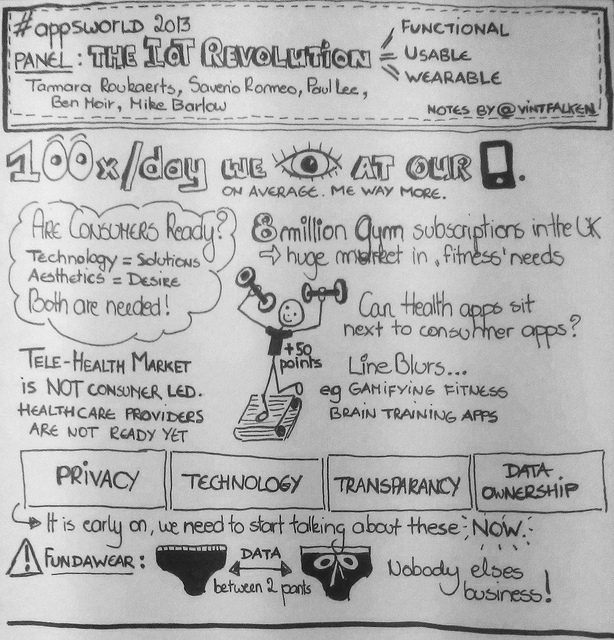As new startups emerge with names you can almost pronounce, and devices that seemingly came straight out of Back to the Future, things can get pretty confusing. To help you sound like you know what you’re talking about, we’ve compiled a short list of the technical jargon you need to know right now. Until tomorrow, that is, when everything will change once again.
The Internet of Things
Also referred to as IOT, this concept will soon take over everything you use from your coffee maker to your washing machine. Literally, the Internet of Things will soon connect products, services, stores, transportation and anything else you can think of, to the Internet. Your bus stop will be connected to the National Weather Service. It will know when a storm is coming, anticipate more traffic and riders, and dispatch more buses before you can say “umbrella.” Your “things” will adapt to your habits and will ease the seemingly mundane day-to-day routines by connecting to that endless source of information – the Internet. Think Nest.
3-D Printing
This is the process of creating three-dimensional solid objects of any shape from a digital model. As opposed to traditional manufacturing that subtracts shapes out of material, this unique process adds material, layer by layer. From a simple sweater button, to a complex chair with a hidden table underneath it, whatever you can imagine, you can print.
Sound Like an Expert: 3D printed objects that mimic the functions of human organs; is that even possible? Yes, indeed it is. In fact it has already been done. A new device was revealed at the University of California, San Diego that mimics the function of a liver. It can remove dangerous toxins from the blood using a 3D printed hydrogel matrix that acts like a dialysis machine by capturing harmful toxins. Think that’s crazy? 3D printed objects have already been successfully implanted in humans. The doctors at C.S. Mott Children’s Hospital in Ann Arbor, Michigan helped save 18-month-old Garret Peterson’s life with a 3-D printed splint implanted in his airway. 3D printed food is coming to, which will give a whole new meaning to the term, ordering in.
Net Neutrality
When you think of net neutrality, think “equality for all [bits of data]”. Instead of having service providers, shape and filter information for a specific audience, people who are pro net neutrality feel the Web is most efficient and open when all pieces of data are treated equally. This means that a user should be able to access all content and shop from any site, not solely the ones with which their provider has a business relationship. The Internet at its core is free and accessible; it is “open”. What would happen if this were not the case? The open Internet could become partially closed or limited.
Sound Like an Expert: Google the FCC
Crowdsourcing
By soliciting contributions from a large group, usually online communities, services, products, apps, even ideas can be generated through the collaborative effort of a group of people. This idea of crowd outsourcing is becoming more and more popular and being used for a range of things from raising awareness to raising money. Crowdsourcing has been used to solve social issues, map environmental catastrophes, even updating you when the cronut stock is running low. You can crowdsource a design to ensure your new company logo is as unique as your gene pool, crowdfund a movie because people like your idea enough to give you money when investors will not (kickstarter.com), you can even crowdspeak and donate your social media “voice” to raise awareness for an issue or a cause with people who care as much as you do (checkout thunderclap.it). Either way, crowdsourcing is not going away any time soon.
Image credit: CC by vintagedept





